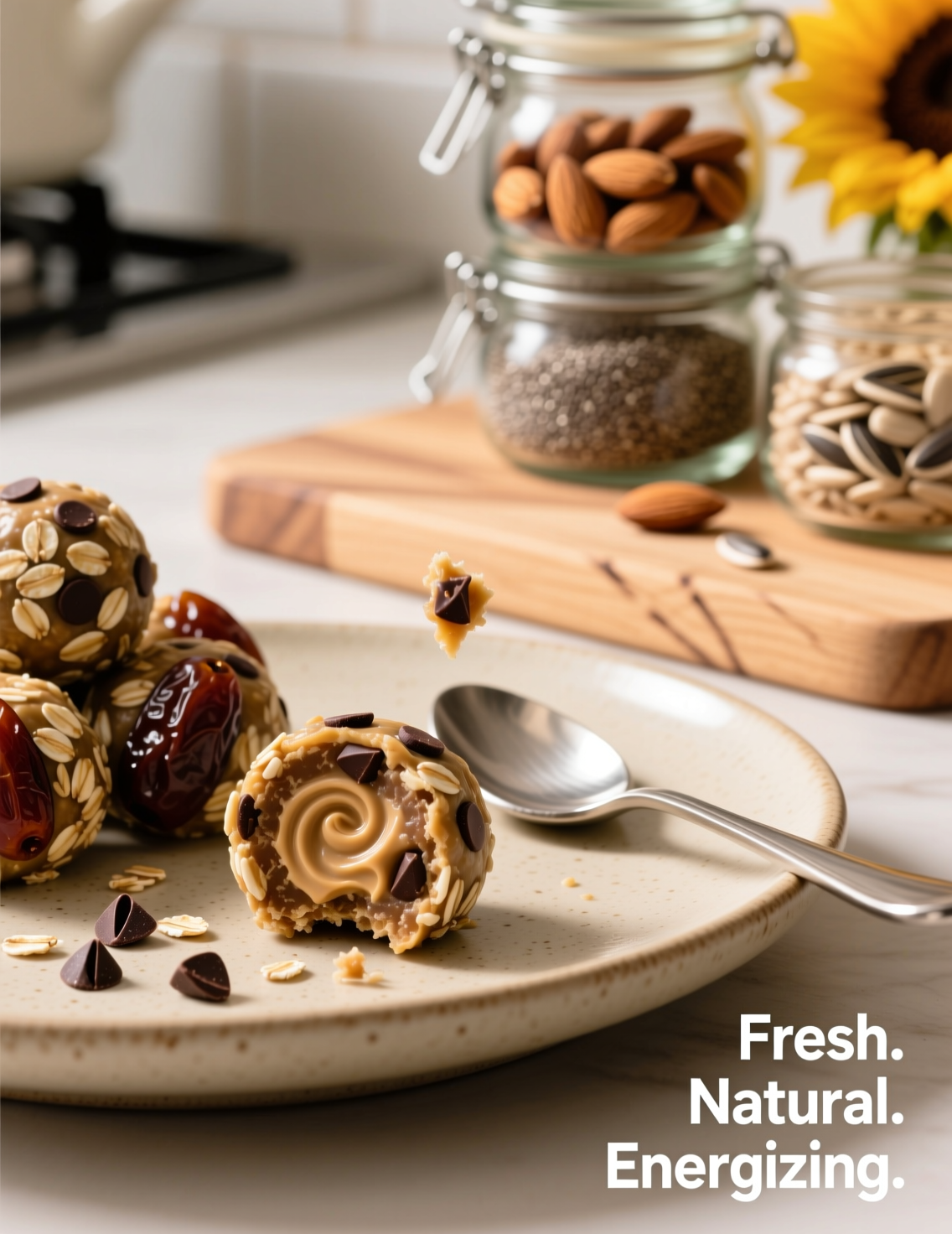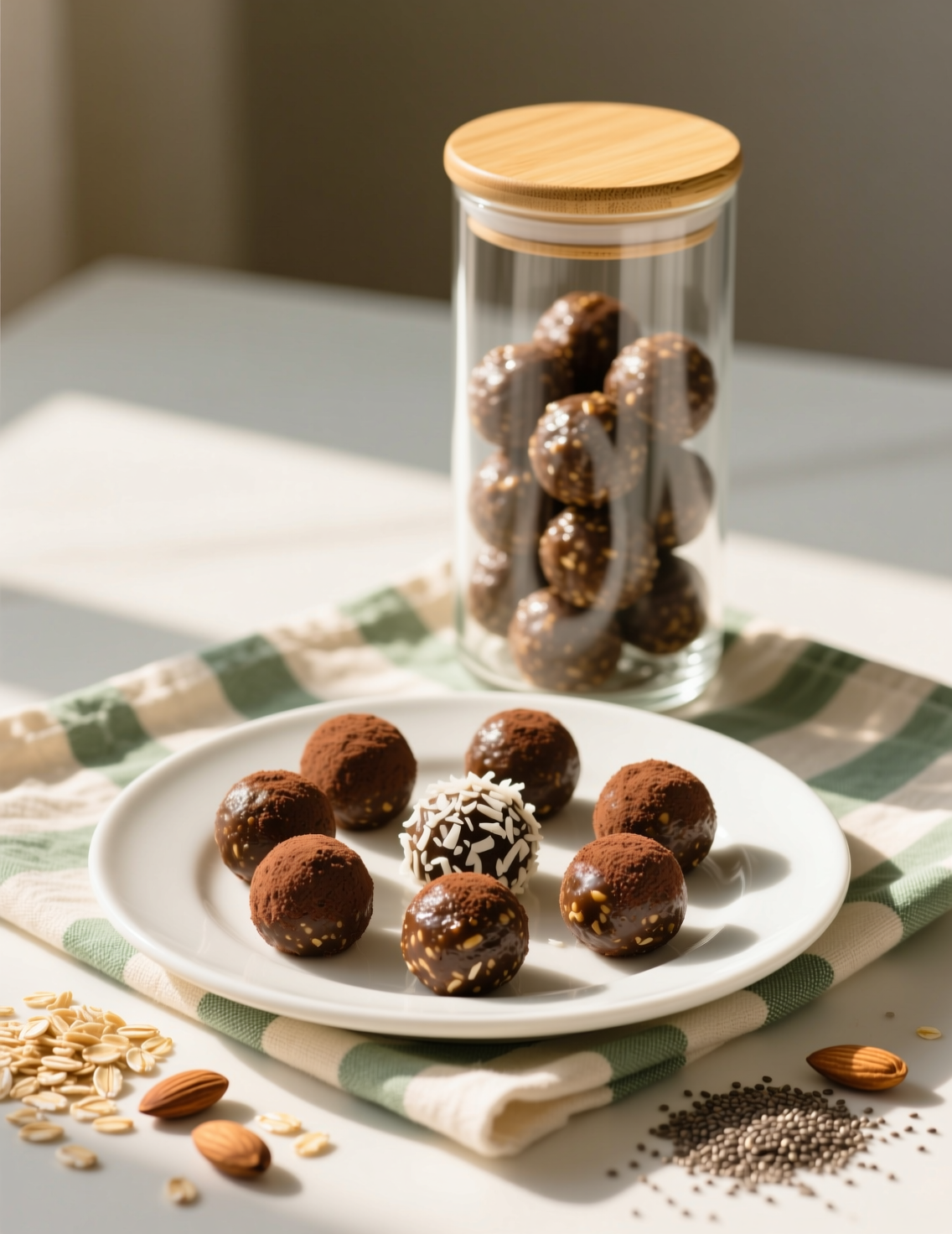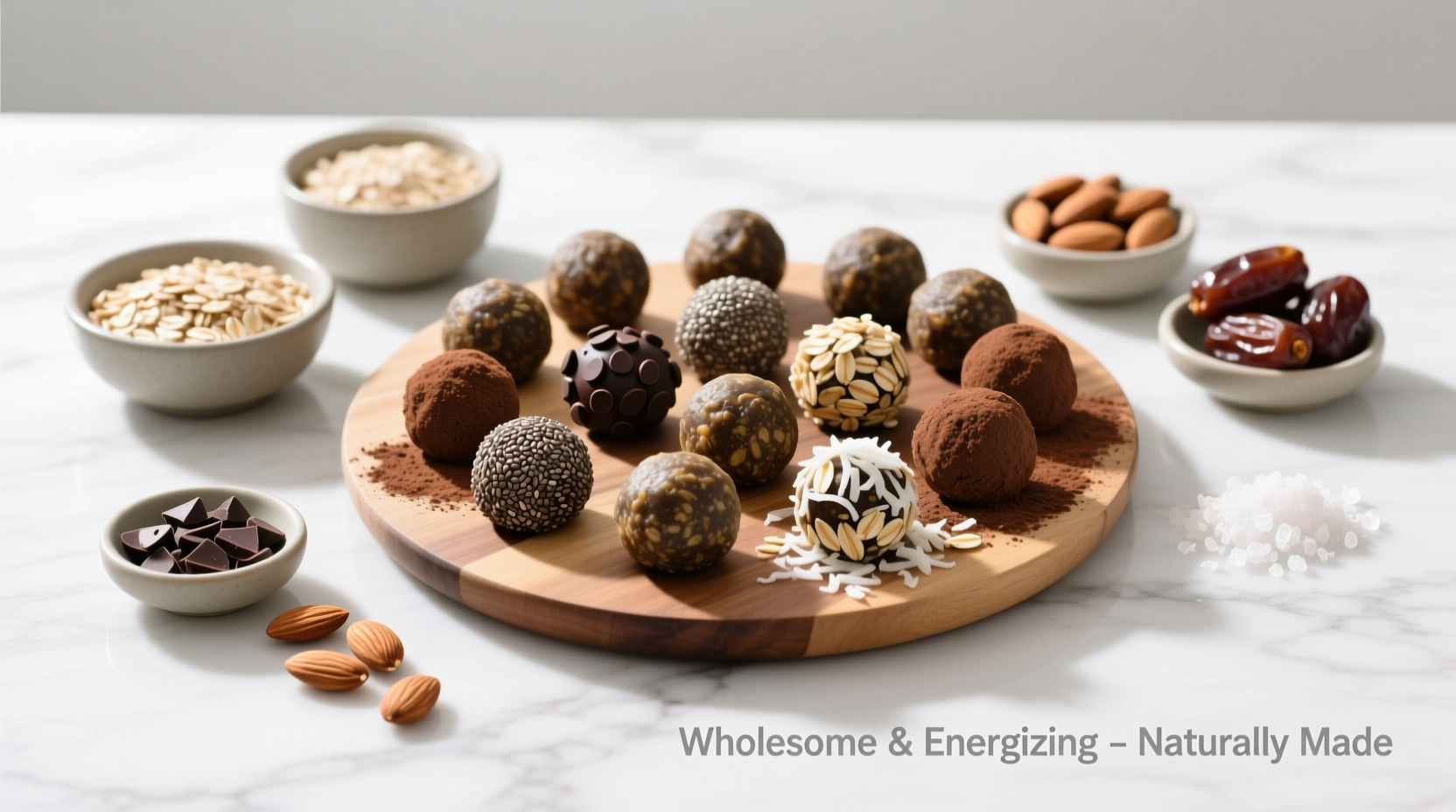There’s a reason energy balls are quietly sneaking their way into professional kitchens, athlete’s bags, and corporate boardrooms. They’re portable, nutrient-dense, and deceptively simple. This article is not just another casual blog post—it’s a deep dive into why these tiny bites work, how to prepare them perfectly, and what the science says about their energizing power. If you’re looking for a professional-grade recipe for Energizing Healthy Energy Balls (20 servings) and the insights behind it, you’re in the right place.
Why Energy Balls Aren’t Just a Trend
Trends in food often fade faster than they rise. But energy balls have been around for decades in different forms—think Middle Eastern date balls or Indian laddus. What sets the modern energy ball apart is the nutritional engineering behind it. They’re built for efficiency: high-quality carbs for fuel, proteins for repair, and healthy fats for satiety.
Recent surveys show nearly 68% of nutrition-conscious consumers prefer snacks that “offer more than taste”—they want functional foods. This demand explains why cafés in New York or gyms in London now stock energy bites alongside cold brews and smoothies. Professionals see these not as treats but as tools.
The Core Framework of an Energy Ball
Let’s strip away the fluff. An energy ball requires four pillars.
- A natural sweet base – Dates, figs, raisins, or dried apricots. These provide glucose and fructose for quick release.
- Binding fats – Nut butters or coconut oil ensure cohesion and slow down carb absorption.
- Protein structure – Powders, seeds, or finely chopped nuts give muscle repair support.
- Functional extras – Superfoods like chia, matcha, or cacao nibs add both micronutrients and market appeal.
Miss one of these and you get a snack that crumbles apart or worse, tastes bland. Professionals know: structure equals functionality.

Professional Recipe: Energizing Healthy Energy Balls (20 Servings)
This recipe yields 20 compact, nutrient-rich servings. Each ball is engineered to be around 100–120 calories, ideal for mid-day energy or pre-workout fuel.
Ingredients
- 2 cups pitted Medjool dates (about 400g)
- 1 cup rolled oats (100g)
- 1 cup raw almonds (150g)
- ½ cup natural peanut butter (125g)
- 2 tbsp chia seeds (20g)
- 2 tbsp ground flaxseed (14g)
- 2 tbsp unsweetened cocoa powder (15g)
- 1 scoop plant protein powder (30g)
- 2 tbsp honey or maple syrup (40g)
- 2 tbsp unsweetened shredded coconut (optional, 15g)
- Pinch of sea salt
Directions
- Pulse the almonds and oats in a food processor until they resemble coarse meal.
- Add dates, cocoa powder, chia, flax, and salt. Blend until sticky.
- Introduce peanut butter, honey, and protein powder. Blend again until the mix clumps.
- If too dry, add 1–2 tsp warm water. If too sticky, sprinkle more oats.
- Roll into 20 even-sized balls (about 25g each).
- Optional: roll balls in shredded coconut for finish.
- Chill for 30 minutes before serving for best texture.
Nutritional Profile (Per Ball, Approximate)
- Calories: 115
- Protein: 4.8g
- Fat: 6.2g
- Carbohydrates: 11.5g
- Fiber: 2.9g
For context, that’s a fraction of what a commercial protein bar contains but with far less processing.
The Science of Why These Work
Glucose uptake from dates is rapid. The natural sugars hit the bloodstream fast, which is why desert cultures leaned on them for survival. Combine that with oats, which bring in soluble fiber (beta-glucans), and you’ve engineered a slow-release energy mechanism.
Chia and flax add omega-3 fatty acids, which have anti-inflammatory properties. This matters for athletes dealing with oxidative stress. A 2018 study in the Journal of the International Society of Sports Nutrition highlighted that small omega-3 supplementation improved recovery time in endurance athletes. These seeds quietly replicate that benefit.
Protein powder isn’t just an add-on—it changes the glycemic load. By combining macronutrients, you prevent spikes and crashes. That’s why dietitians often recommend mixed-nutrient snacks like these for diabetes management.
Common Mistakes Professionals See
Many amateur recipes make critical errors.
- Overloading sweeteners: Using too much honey or syrup creates a calorie bomb, not an energy booster.
- Skipping binders: Without nut butter or oils, the texture crumbles, which isn’t practical for transport.
- Neglecting portioning: Professional kitchens weigh portions to maintain consistent macros. Home cooks often don’t.
It’s like bread baking—you can’t ignore ratios. Every gram matters.
Variations Professionals Experiment With
Energy balls are not rigid. Professionals often adapt them depending on clientele.
- Matcha Energy Balls: Add 1 tbsp matcha powder for antioxidants and caffeine micro-dose. Popular in wellness cafés.
- Espresso Bites: 1 tsp finely ground espresso beans gives a caffeine punch—favored in corporate snack boxes.
- Tropical Balls: Swap dates for dried mango, coconut flakes, and macadamia nuts. Perfect for summer menus.
- Keto Version: Replace oats with almond flour, skip honey, use erythritol instead. This targets low-carb consumers.
Such adaptations keep the base formula intact but align with evolving dietary preferences.
Shelf Life and Storage Insight
Food safety isn’t negotiable. With no preservatives, these balls last up to 7 days refrigerated or 2 months frozen. Vacuum-sealing extends freezer storage further. Professionals packaging for sale often use modified-atmosphere packaging (MAP) to slow oxidation.
A 2019 market analysis on snack foods reported that shelf-stability is a top priority for consumers who buy “grab-and-go” health products. That’s why bars dominate retail shelves. But energy balls, when stored right, can rival them in convenience.

Why Professionals Should Care
Energy balls might seem small, but they sit at the intersection of nutrition, business, and lifestyle. Restaurants now offer them as guilt-free dessert options. Corporate catering companies sneak them into wellness programs. Even airlines are exploring bite-sized energy snacks as part of their “better travel food” initiative.
This isn’t just food—it’s strategy. A chef who understands how to engineer an energy ball that works nutritionally can tap into a market worth over $90 billion in functional foods globally.
Addressing Misconceptions
Some critics dismiss energy balls as glorified sweets. The truth: the glycemic load, fat-protein balance, and micronutrient density make them distinct. It’s not candy if your body uses it as fuel rather than storing it as fat.
Another misconception is that energy balls are only for athletes. Wrong again. Busy professionals, nursing mothers, or even students during exam prep benefit equally. It’s about sustaining energy where traditional snacks fail.
Emerging Trends in Energy Balls
- Adaptogens: Ashwagandha, maca, and reishi mushroom powders are slowly being tested in energy bites for stress management benefits.
- Savory Balls: Using chickpeas, tahini, and herbs, these mimic Mediterranean flavors. Early adoption in wellness restaurants suggests this will grow.
- Functional Collagen Additions: Collagen peptides in balls support skin health—especially marketed toward women’s wellness brands.
The category is expanding faster than most expect.
Expert Tips for Scaling the Recipe
If you’re preparing 100 or 500 servings for professional catering, don’t just multiply ingredients blindly. Ratios change as volume increases due to how fat binds or how dates compact in larger mixers. Always test a pilot batch.
Use a planetary mixer for commercial production—food processors overheat quickly when handling date-heavy mixtures. Cooling the bowl slightly prevents oils from nuts separating, which ruins texture. Professionals know equipment choice determines efficiency.
Final Thoughts
The Energizing Healthy Energy Balls Recipe for 20 servings is not just a snack but a blueprint. It blends culinary technique with nutritional science, creating a functional food that stands up to scrutiny. Whether you’re a chef, nutritionist, or food entrepreneur, these little bites deserve a place in your toolkit.
They’re portable fuel, crafted with purpose, adaptable to trends, and proven by both science and culture. The next time someone dismisses them as “just a fad,” you’ll know better—and maybe you’ll have a batch chilling in the fridge, ready to prove the point.
FAQs
What are energy balls made of?
They’re usually made from dates, oats, nuts, seeds, protein powder, and natural sweeteners.
How many servings does this recipe make?
This professional recipe yields 20 evenly sized servings.
How many calories are in one energy ball?
Each ball contains around 115 calories on average.
Are energy balls good for weight loss?
Yes, if eaten in moderation—they provide balanced energy without processed sugars.
How long do homemade energy balls last?
They last 7 days refrigerated or up to 2 months frozen.
Can I make them without protein powder?
Yes, you can skip it or replace with extra nuts or seeds.
Are energy balls suitable for athletes?
Absolutely—they deliver quick carbs, protein, and healthy fats for recovery and fuel.
Can energy balls be made vegan?
Yes, just use maple syrup instead of honey and plant protein powder.
Do energy balls spike blood sugar?
Not significantly, since fats and proteins balance the natural sugars.
Can I sell energy balls commercially?
Yes, but portioning, packaging, and shelf stability need professional attention.

Mariana is a passionate home cook who creates delicious, easy-to-follow recipes for busy people. From energizing breakfasts to satisfying dinners and indulgent desserts, her dishes are designed to fuel both your body and hustle.
When she’s not in the kitchen, she’s exploring new flavors and dreaming up her next recipe to share with the Foodie Hustle community.

